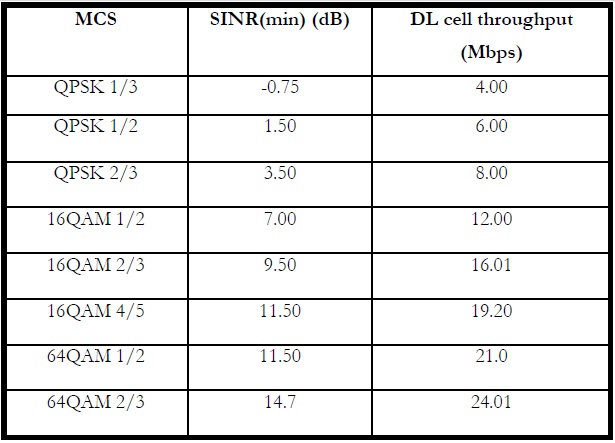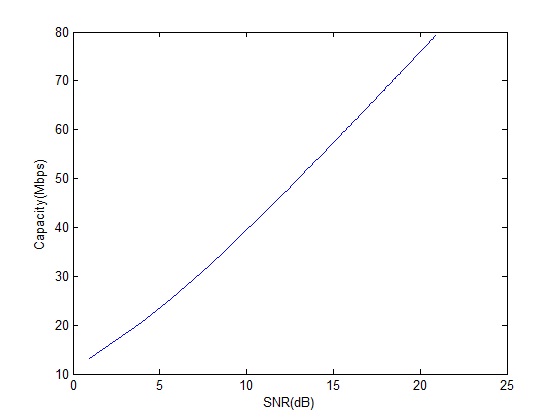Average Cell Throughput requires the following simulation results
• Average SINR distribution table (system level result), which provides the SINR probability
• Average throughput or spectral efficiency versus average SINR table (link level result)
For urban channel model and a fixed inter-site distance of 1732m,downlink throughput for LTE for different values of SINR is shown below.
Average Cell Throughput=Σ(Pi*Ri)
where
Pi=Probability of occurrence of a specific SINR value at cell edge obtained using simulations
Ri=Average throughput corresponding to SINR range
Let us consider the following distribution for the SINR at the cell edge:
P1=0.5 (SINR=1.50-3.50 dB)
P2=0.25 (SINR=3.50-7.00 dB)
P3=0.15 (SINR=7.00-9.50 dB)
P4=0.10 (SINR=9.50-11.50 dB)
Cell Throughput=(0.50*4)+(0.25*6)+(0.15*8)+(0.10*12)=5.9 Mbps
Note: This throughput is much less than the theoretical maximum which assumes that the full 20 MHz bandwidth is being utilized in a 4×4 MIMO configuration.

